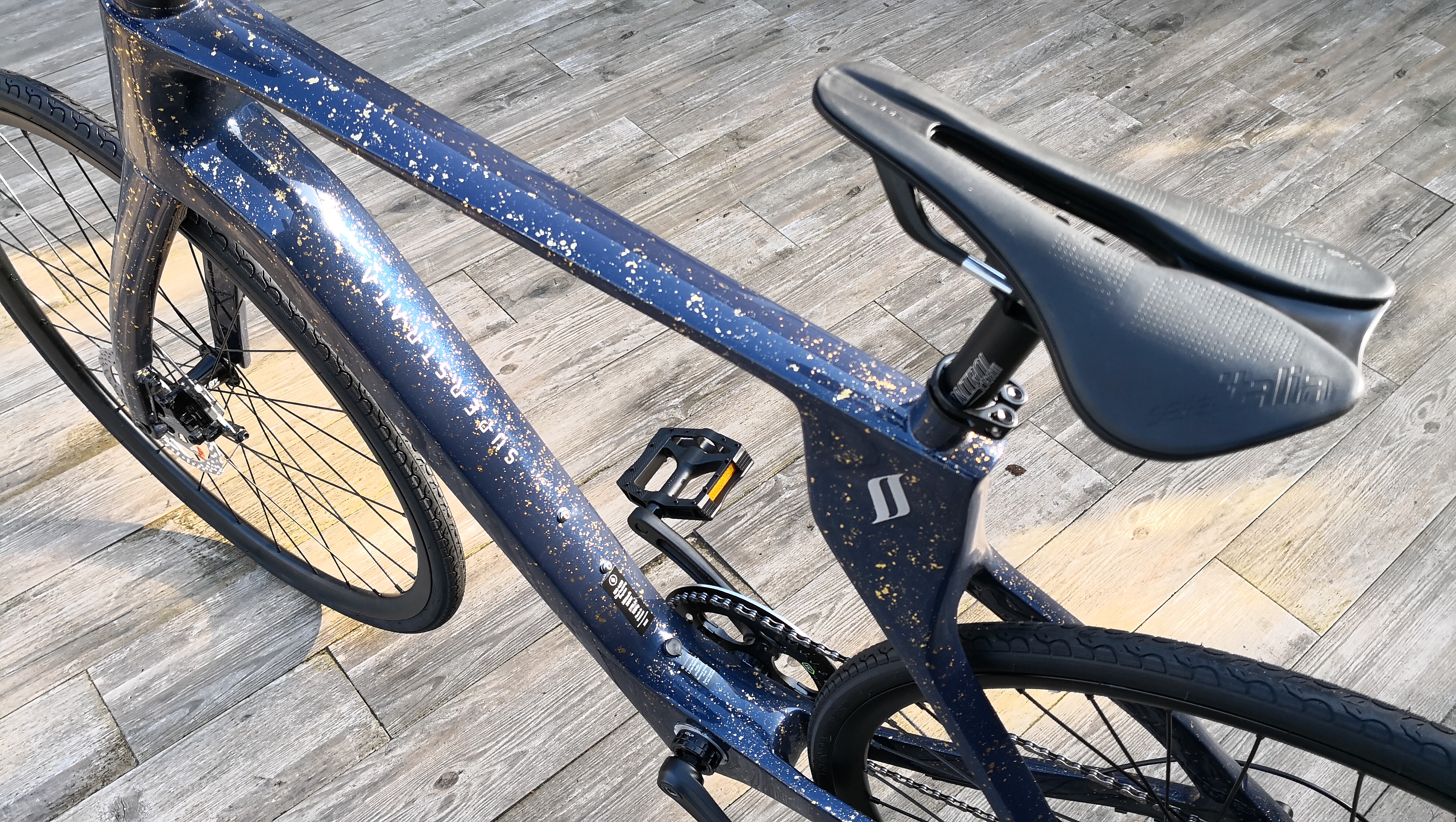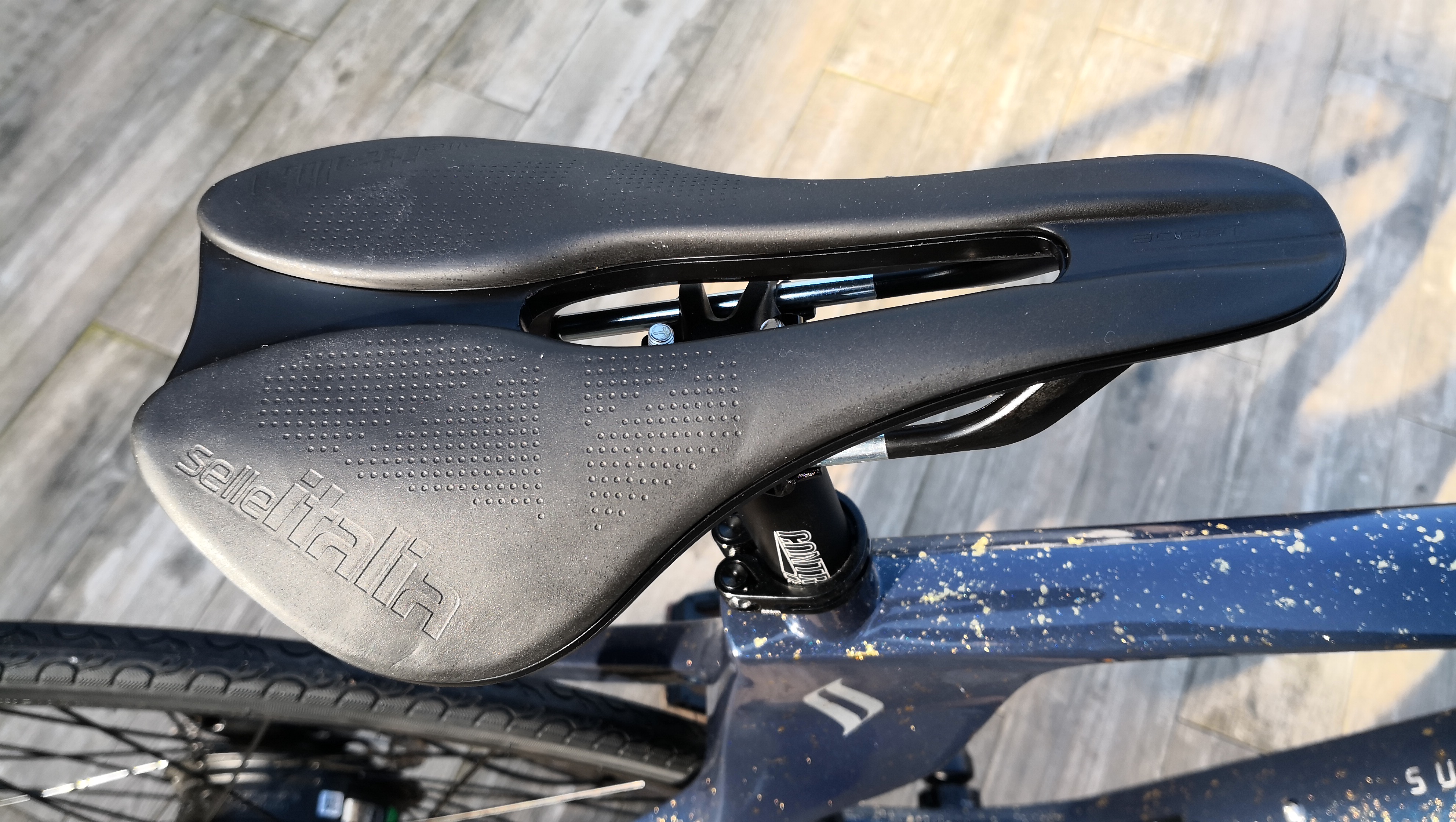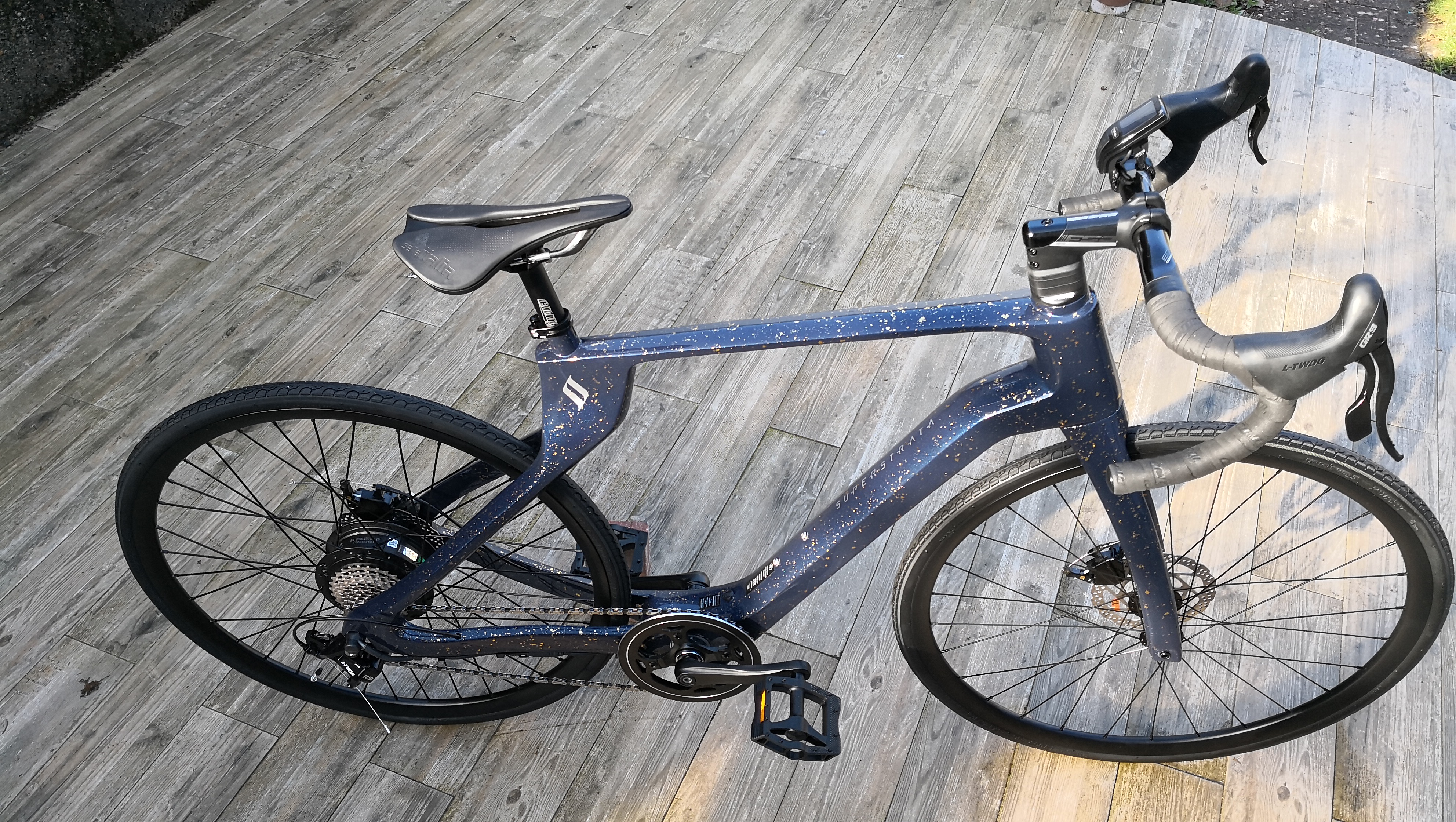Superstrata E review: This 3D-printed electric bike is a little hit and miss
Full marks for the good intentions, but the execution makes Superstrata’s E bike a bit of a mixed bag

It might catch your attention with its unusual 3D-printed frame, but the Supertrata E seems like too much of a work in progress. The custom frame size options are a nice touch, but the components used to complete this bike are decidedly hit-and-miss. Plus, the Superstrata E delivers a somewhat lacklustre ride, which, coupled with the hefty price tag, makes it hard to recommend.
-
+
Custom sizing is ideal for riders 'in-between' standard frame options
-
+
Easy to personalise
-
+
Out there styling
-
-
Sub-par component choices
-
-
Lacklustre ride experience
-
-
High cost isn't justified
Why you can trust T3
Superstrata E review in a sentence: an all-electric bike with a 3D-printed frame, a harsh ride and a less-than-great line-up of parts.
The Superstrata E sounded really exciting when it was first mentioned to me. After all, we spend a lot of time looking at the best electric bike options out there, so to hear about one that also features a 3D-printed thermoplastic carbon frame makes the Superstrata E something of a curio. There’s a lot of other exciting stuff surrounding this electric bike, too, like the unorthodox frame styling and mix of racing-bike aesthetics blended with derailleur gears and a hub motor setup good for up to 60 miles of range.
Sadly, as I unpacked the bike from its box and started assembling it, the low-volume design of the Superstrata E became apparent. It doesn’t look or feel like a bike that has rolled off a state-of-the-art production line. In fact, the choice of component used in its construction comes across as fairly low-end. In some places, this is really noticeable, with the handlebar-mounted Bafang computer being a prime example of cheap and cheerful accessories. Let’s take a deeper dive to see if the Superstrata E hits the mark, shall we?
Superstrata E review: Price and availability
The Superstrata E can be configured to suit a buyer's requirements, but the base price is currently $3,500 (approx. £2,900) and is available via Superstrata's own website. You can buy it as a single-speed bike or opt for the $500 geared edition. There are lots of other ways to customize your order on the Superstrata website, which allows for all sorts of configuration and paint finishes, but at added cost.
Superstrata E review: Design and build quality
The bike’s makers describe it as ‘The World’s first true unibody carbon fibre bicycle’, and the 3D-printed frame is perhaps the most distinctive thing about this two-wheeler. The electric edition has an integral battery, which sits in the wide front downtube. This supplies power to a 250W hub-mounted motor in the back wheel, which looks like a standard Bafang model as seen on countless other electric bike models. It’s controlled via the aforementioned Bafang computer, located on the handlebars, using +/- buttons to add or subtract assistance.

The Superstrata E turns up in the usual giant-size box, so there’s some assembly required, such as putting on the front wheel, fixing the computer to the handlebars and adding the saddle and pedals. It’s all reasonably straightforward, especially thanks to the nifty little multi-tool that’s included. My bike had flat tyres, too, although there’s a tiny pump inside the toolbox pack, but it’s so small I opted for a car foot pump instead.

The narrow, racing bike-style tyres come in three options; smooth tread, mixed tread or aggressive tread on wire-spoked rims, depending on what you expect to be doing with it. There are drop handlebars, although a flat speedster alternative is available, an unforgiving racing bike saddle and derailleur gears – costing an additional $500 over the single-speed base edition. Again, the component brand can be selected when you spec the bike.
At first glance, the Supertrata E looks like a racing or road bike, but the frame is noticeably different, mainly because there’s no down tube under the saddle. Mechanical disc brakes provide the stopping power front and rear. So, then, the Superstrata E looks as though it ticks all of the boxes, but it doesn’t take long to start spotting some disappointing flaws and compromises.
Get all the latest news, reviews, deals and buying guides on gorgeous tech, home and active products from the T3 experts
Superstrata E review: Riding experience
Perhaps the biggest disappointment of all is the ride itself. I used to ride drop handlebar bikes a lot as a kid, but not so much these days. Now, I prefer a more upright riding position, which I would have got if the bike had arrived with those Speedster-style handlebars. As it stands, the drop handlebar edition feels pretty uncomfortable, something not helped by a pretty grotty saddle.
This isn’t a lightweight bike either - though no weight is specified on the website, and the weight distribution feels all wrong too. That’s mainly due to the motor being in the back wheel with not much out front. This is exacerbated by the narrow, racing bike wheels. You pay the price for having these on poor surfaces, too, with a harsh ride quality that causes the bike to jolt around over ruts and holes in the road. Smooth cycle tracks make life much easier, but they're not exactly plentiful.

That brings us to the theme of quality, which sadly seems to be lacking in quite a lot of the components of Superstrata E. The Bafang bike computer on the handlebars looks terribly cheap and nasty, with a flimsy case and low-resolution-looking display. It works well enough, but the feeling it gives you is dispiriting, to say the least.
Power delivery once you’ve selected your mode is okay, though it doesn’t feel premium, which is at odds with the cost of this electric bike. Gear changes using the 11-speed derailleur setup via handlebar levers are also patchy and certainly not the slick and seamless experience you expect from a bike with such a premium price tag.

Superstrata E review: Verdict
The Superstrata E feels like a little bit of an expensive experiment, which, had it been completed using better components, might well have been a success. At the moment, though, it feels like there is more that’s wrong than right with this e-bike. It looks okay, though the unconventional frame will not be to all tastes; if you get one in an eye-popping colour scheme, you’ll turn heads with it.
However, you’ll pay a lot for the privilege, and, to be honest, I haven’t seen enough on my test example to make me convinced it’s a good value package. The Superstrata experience probably gets better if you choose the components when you ‘build your bike’ during the ordering process. The one I’ve been using is a simple out-of-the-box variant, and maybe that’s why it doesn’t feel quite right to me. It’s a nice idea ‘n’ all, but the Superstrata E needs more work, I’m afraid.
Superstrata E review: Also consider
For almost the same price as the Superstrata E, you can buy a Canyon Roadlite:ON, which, admittedly, is an e-bike from a more established brand with a well-earned reputation for its quality products. The Roadlite:ON has a more urban styling and hides the battery neatly in the bike's tubing. Read Aaron's first-hand experience with the Canyon Roadlite:ON.
Or, check out the Gocycle G4i for a folding option. Gocycle has given a futuristic flavour to how the G4i moves, as well as how it looks. Powered by the all-new G4drive, where many other e-bikes can feel sluggish and boring, the G4i never feels less than zippy right from the moment you start pedalling. Read e-bike expert Duncan's thoughts on the Gocycle G4i.

Rob Clymo has been a tech journalist for more years than he can actually remember, having started out in the wacky world of print magazines before discovering the power of the internet. Since he's been all-digital, he has run the Innovation channel for a few years at Microsoft, as well as turning out regular news, reviews, features and other content for the likes of Stuff, TechRadar, TechRadar Pro, Tom's Guide, Fit&Well, Gizmodo, Shortlist, Automotive Interiors World, Automotive Testing Technology International, Future of Transportation and Electric & Hybrid Vehicle Technology International. In the rare moments he's not working, he's usually out and about on one of the numerous e-bikes in his collection.
